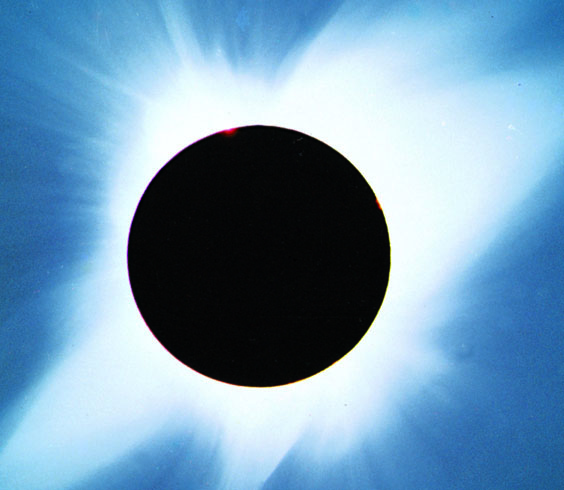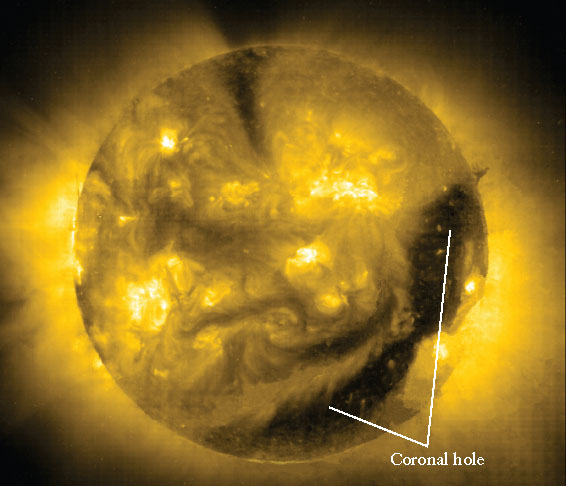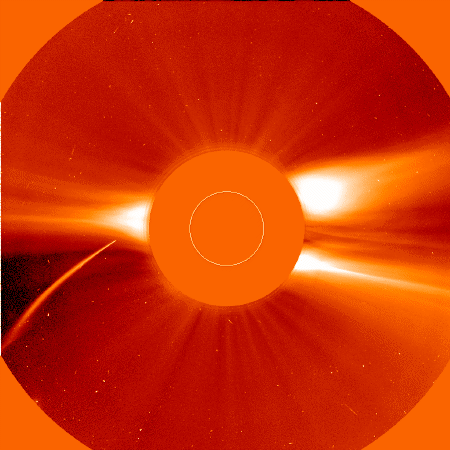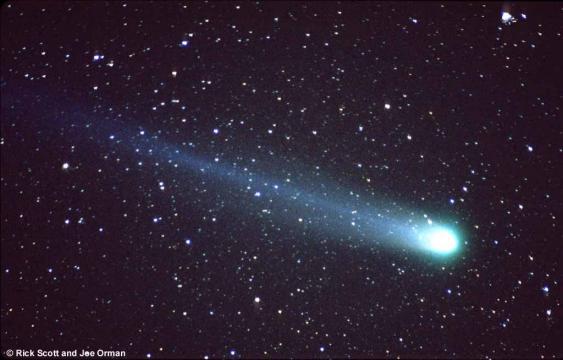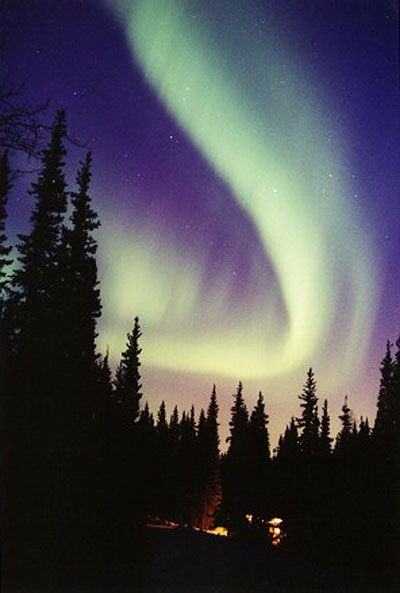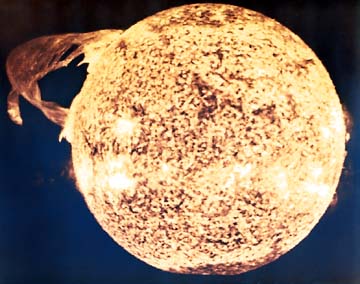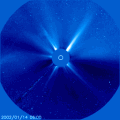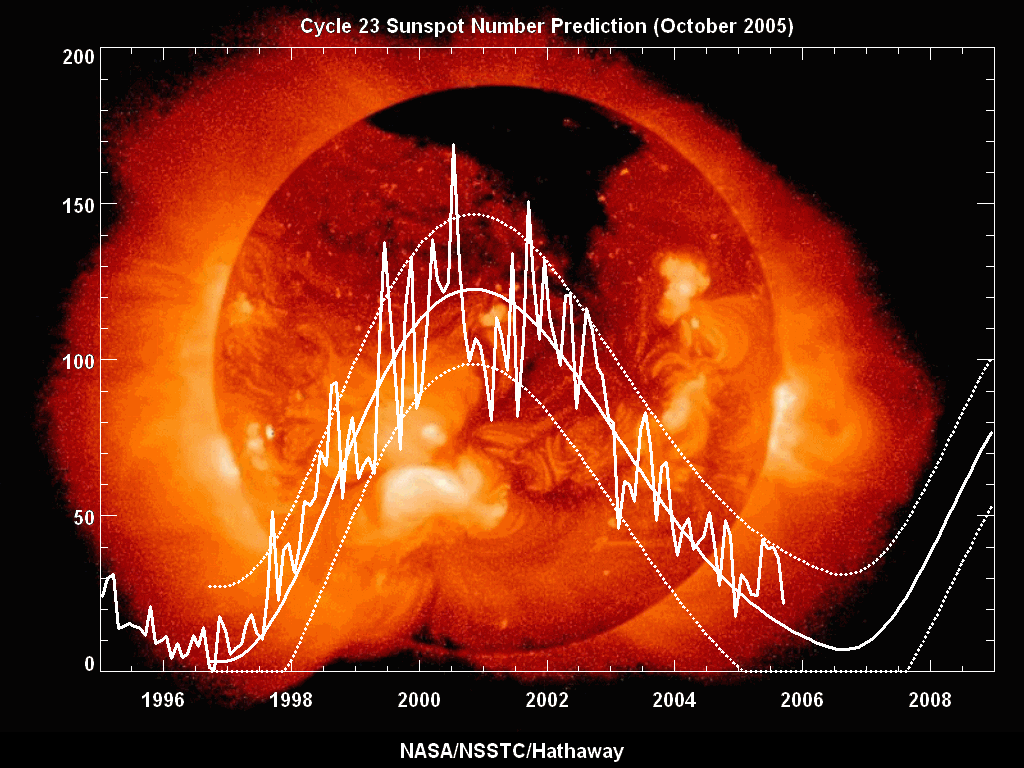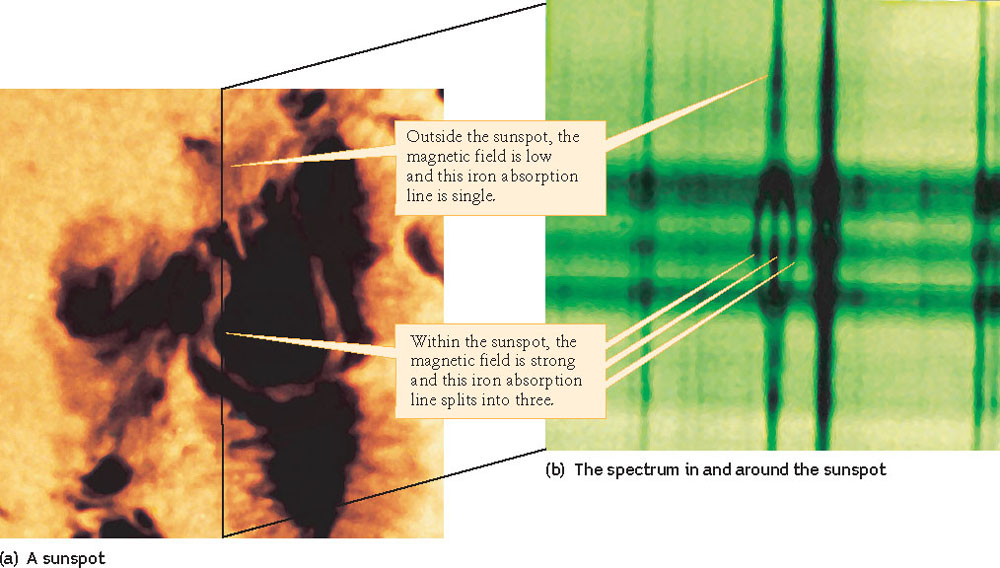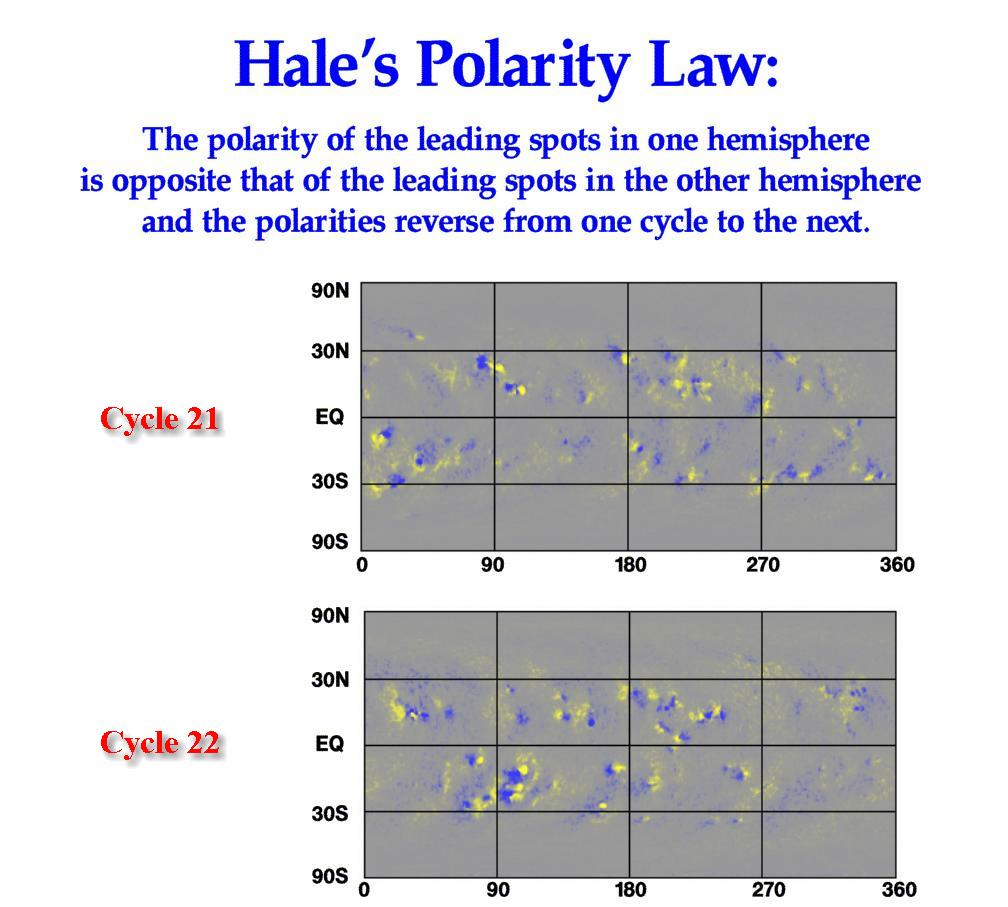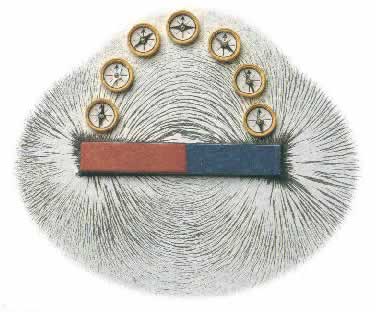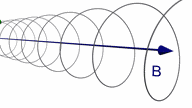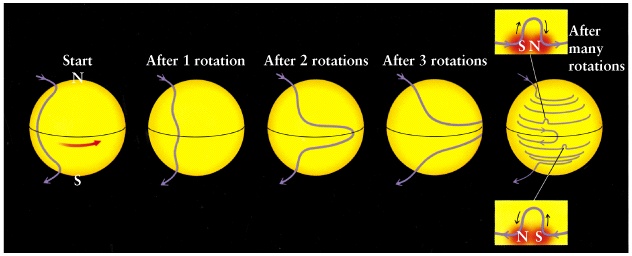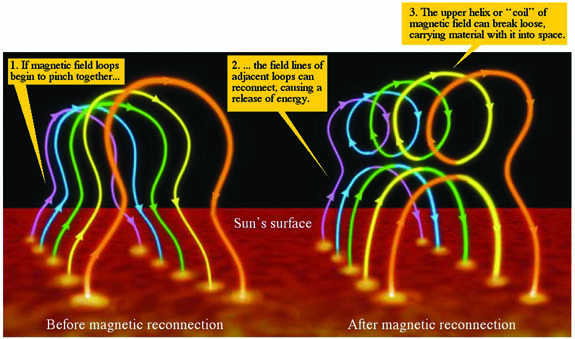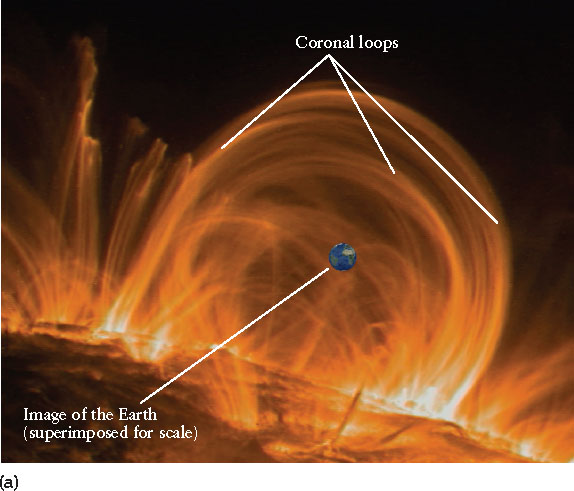- The magnetic field lines is "frozen" into the plasma of the
Sun and is dragged along when the gas moves.
-
Sun gas near equator makes a turn in 25 days, near the pole - in 36 !
Such differential rotation of the Sun stretches the magnetic
field lines into "horizontal" tubes
|
- Sunspots form when magnetic field near the surface break away from plasma
pushing hot gas to the side.
-
This produces loops of magnetic field
of the right polarity sticking out of the surface.
|
